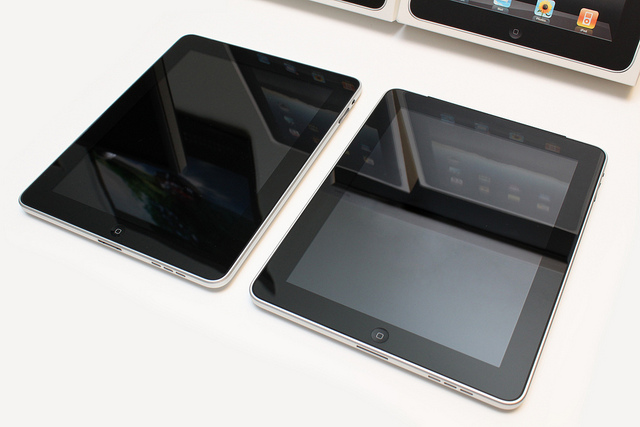
The iPad was hailed by many as the savior of the magazine publishing industry when it hit the market back in 2010. It represented a chance for publishers to reinvigorate their flagging subscriber bases with rich, interactive user experiences and to reclaim some of the brand ad dollars that slipped through their fingers on the Web.
But two years later, few publishers have really gone out of their way to embrace the device. There are examples of magazines that have been adapted well for the iPad environment — Wired and GQ spring to mind — but they’re exceptions to the rule. The fact is most iPad editions of magazines are simply print products squeezed onto a tablet screen with little, if any, consideration for the unique user experience of tablets.
Major publishers like Hearst, Conde Nast and Bonnier, simply shrink print pages for many of their titles and ship them out to tablet users with a few added links but with little in the way of interactive content. Examples include titles such as Men’s Health, Harper’s Bazaar, Good Housekeeping, Runner’s World, Bicycling, and more. Owing to the iPad’s smaller screen, copy is often impossible to read without zooming in or resizing the page, and before long, it’s difficult to see why users would choose an iPad magazine over an old-fashioned print one. It is akin to the early days of websites, when “brochureware” was the norm.
“I don’t think there’s anything magazine-like out there that’s really resonating or working,” said Khoi Vinh, former design director for The New York Times. “Ultimately, the concept of a magazine feels like an uncomfortable fit for this platform. It shouldn’t be a packaged slate of content; it’s an awkward fit for a connected device that can be up to the minute.”
Meanwhile, Jason Baptiste, CEO of in-browser tablet-publishing platform Onswipe, said most tablet magazines are “little more than bloated PDFs” but suggested it’s simply too expensive for publishers to do much more.
“It’s probably as good as it’s going to get,” he said with a hint of resignation referring to efforts by Wired, GQ, and the like. “My guess is taking the physical magazine to the iPad just won’t work. Publishers can do simple things, add some interactivity, but to make it that much more advanced would just cost too much money. That’s the general tragedy of it, it’s probably not going to be much better than the magazine experience ever.”
According to Vinh, publishing-related innovations on the iPad have been slow to evolve. Following early efforts from titles such as Wired, Conde Nast’s flagship tablet title, there’s been little progress in the way content is being delivered on the device, he suggested.
“There’s been surprisingly little movement since the beginning of the whole thing. There were the initial magazine products, followed by The Daily and Flipboard, but it’s been pretty quiet since then. I haven’t seen much genuinely new in a while.
That’s too bad. The iPad represents not only an opportunity for publishers but something of a threat if they don’t seize it. According to Paul Rossi, managing director of The Economist, iPad editions are replacements for print, something websites weren’t. That means magazine publishers better get moving on figuring them out.
Speaking at the Digiday Publishing Summit late last month, Rossi said the fact that Economist subscribers are giving up paper keeps him up at night, despite the fact they’re still willing to pay for digital content.
According to the company’s own research, 50 percent of current Economist subscribers predict they’ll be reading the publication digitally in two years’ time. “If you have a business where half of your customers are giving up the product you make most of your money out of today, then you have to start changing,” Rossi warned.
That said, tablets can also unlock new revenue streams. Twenty percent of the Economist’s digital single copy sales are for back issues, Rossi said, a revenue stream that’s basically non-existent in print.
However, there’s still money to be made in print; that much is clear. The question is how long that will last. Tablets will inevitably play a starring role in the future of content consumption, and publishers need to reorganize their operations around the devices to make the most of the opportunities they present, rather than just viewing them as an extension of their existing products and businesses.
That appears to be the thinking behind Hearst UK’s new quarterly publication, Good Ideas, which will see it start with tablets and work its way backwards to print. It’ll feature tablet-friendly features such as smaller articles, greater emphasis on visuals and tablet-friendly typefaces, the company said, “making it accessible for both the traditional newsstand and digital reader.”
“Most of the content we’re seeing on the iPad today is print-first, not digital-first,” said Baptiste. “I don’t think we’ll ever really see it take off in its current form.”
More in Media

Digiday+ Research: Publishers’ growing focus on video doesn’t translate to social platforms
Major publishers have made recent investments in vertical video, but that shift is not carrying over to social media platforms.

Technology x humanity: A conversation with Dayforce’s Amy Capellanti-Wolf
Capellanti-Wolf shared insight on everything from navigating AI adoption and combating burnout to rethinking talent strategies.

How The Arena Group is rewriting its commercial playbook for the zero-click era
The company is testing AI-powered content recommendation models to keep readers moving through its network of sites and, in doing so, bump up revenue per session – its core performance metric.





